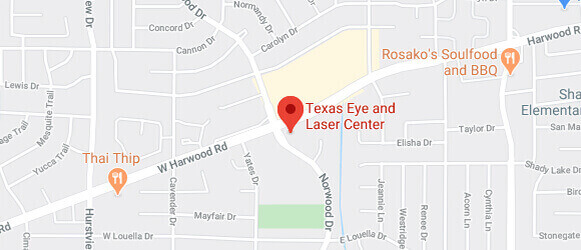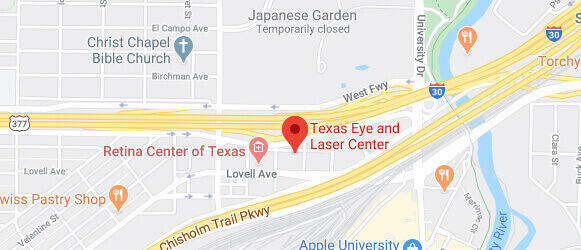Whether PRK, LASIK or SMILE is the laser vision correction best suited for you and your lifestyle, your vision for the future can be less dependent on glasses.
PRK and LASIK procedures have been helping U.S. patients see more clearly without glasses or contacts since the mid-1990s. We are excited to tell you about the newest laser vision correction technology coming to Texas Eye and Laser Center – SMILE! Together with LASIK and PRK, SMILE provides us with a complete set of laser vision correction tools to help many patients find better vision and less dependence on glasses or contacts.
Understanding how LASIK, PRK and SMILE work will help you understand your vision procedure options.
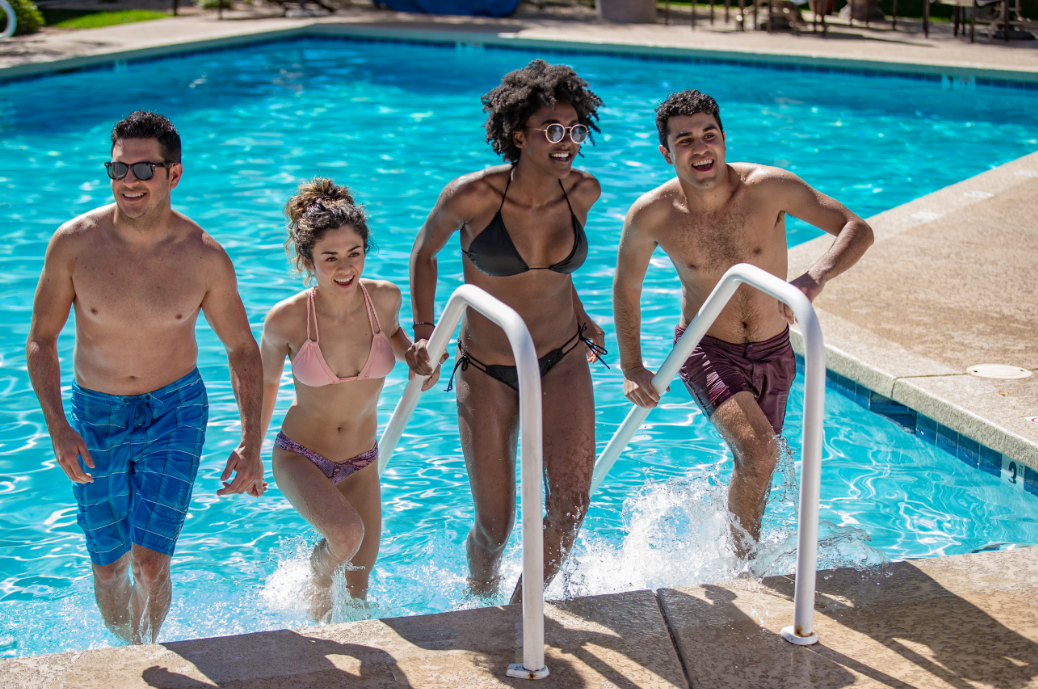
PRK: PhotoRefractive Keratectomy
Developed in the late 1980s, PRK is a good option for patients with thin or irregular corneas, predisposition to dry eye, as well as those with certain lifestyles or jobs. PRK can treat nearsightedness, farsightedness, and astigmatism.
During the PRK procedure, the outer layer of the cornea (the epithelium) is gently removed using a manual instrument. The surgeon then uses a laser to reshape the cornea and correct vision. The surgeon places a bandage contact lens on the eye to improve patient comfort. The patient is typically back to driving and normal activities in about a week.
Learn more about PRK on our PRK page.
LASIK: Laser-Assisted Stromal In-Situ Keratomileusis
LASIK was developed in the early 1990s and is the most utilized form of laser vision correction today. It can treat mild to moderate nearsightedness, farsightedness, and astigmatism.
During the LASIK procedure, a laser makes a corneal flap. The surgeon folds the flap back, and a second laser reshapes the cornea, which allows the eye to focus clearly. The flap is then folded back into its original position, which allows a rapid return of vision. Patients are typically driving the next day without glasses.
Using advanced technology, LASIK has become a safe and very predictable procedure. Computer-controlled, laser tracking and auto centration customize the LASIK procedure so you can achieve your best possible vision without glasses. 98% of patients who have LASIK report they are very happy and would have LASIK done again.
Check out our LASIK page to learn more about all the ways LASIK can help you see more clearly.
SMILE: Small Incision Lenticule Extraction
SMILE is the first major innovation in laser vision correction since LASIK. It can treat nearsightedness and astigmatism.
We often describe SMILE as LASIK without a flap, or flapless LASIK. The procedure is minimally invasive, noiseless, and odorless. Additionally, the SMILE procedure uses less pressure than LASIK, making it more comfortable and reducing the occurrence of red eyes to virtually zero.
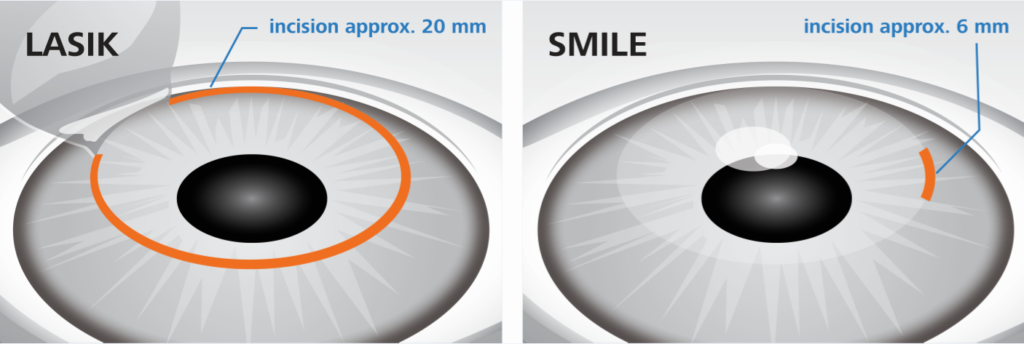
During a SMILE procedure, a thin, contact lens-shaped layer just beneath the surface of the eye is removed through a small opening. Due to removing this layer, the cornea is gently reshaped, and the patient’s vision is sharpened, correcting their refractive error.
SMILE is a gentle and highly precise procedure lasting only a few minutes total, with the laser only active for about 30 seconds. There is little disturbance to the eye because of the small laser opening size.
Cases of dry eye appear to be less with SMILE because fewer corneal nerves are affected which promotes faster healing and return to normal activities. Overall it tends to be a very comfortable and convenient experience for patients. Patients can resume most normal daily activities within a few days, including showering, applying makeup and physical activity.
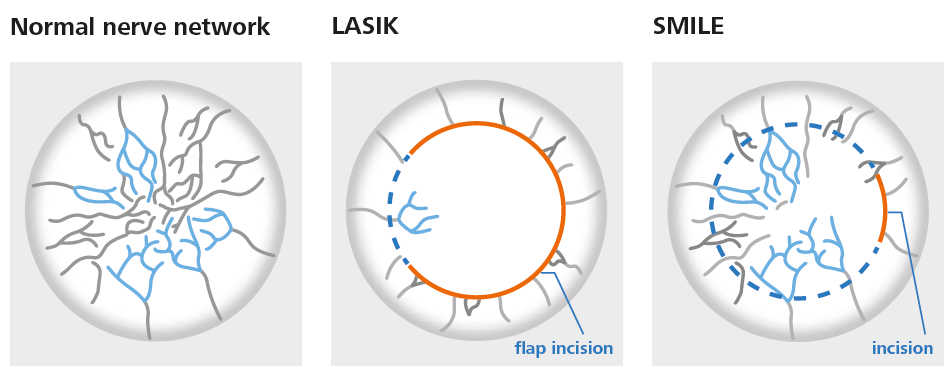
The visual outcome is highly predictable. Millions of SMILE procedures have been performed worldwide, and results have been excellent.
There are several advantages to SMILE, including:
- No LASIK flap
- Less dry eye
- Faster return to work and physical activities
- Very effective treatment for nearsightedness and astigmatism
- A gentle and less invasive laser procedure with excellent stability
The best way to find out which procedure is right for you is to come in for a free laser vision correction screening! Call (817) 803-6106.

